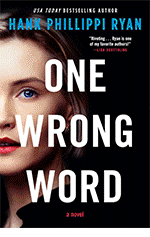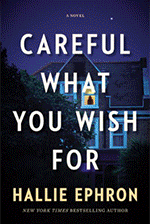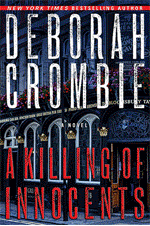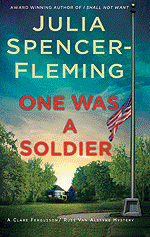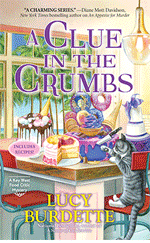DEBORAH CROMBIE: Marcia Talley was one of the very first friends I made in the mystery writing world--at my first Malice Domestic, in fact. Although her first Hannah Ives novel, SING IT TO HER BONES, was published a couple of years after my first novel, she has now beaten me to #20 in her series, with CIRCLES OF DEATH!
But I am celebrating right along with her, because sitting down with a new Hannah Ives is like a get-together with great friend you've been longing to see.
MARCIA TALLEY: Whenever I turn in the final manuscript of a novel, I pour myself a congratulatory glass of wine, sit back and start to worry that I’ll never come up with a good idea for the next one. About two weeks into this worry-fest for my twentieth Hannah Ives mystery, I met Donna Cole through mutual friends. Donna is the multi-award-winning investigative reporter whose dogged reporting on the death of thirteen bald eagles on Maryland’s Eastern shore in 2018 brought global attention to a ‘dirty little secret’ that I’ll get to in a moment.
And Donna lives in my neighborhood! She is the U.S. Navy veteran, bird of prey rescuer, wildlife photographer, breast cancer survivor, neighbor and friend who inspired and informed my novel. You can keep up with Donna (but you’ll need track shoes!) at https://www.annapoliscreative.com
Anyway, we got together, and Donna introduced me to RSAs--Reserve Shooting Areas--farmland that is set aside as hunting preserves where outfitters are permitted to bring city slickers in on excursions to blow the smithereens out of ducks that have been raised specifically for that purpose.
In order to control predators that take a toll on their stock, some unscrupulous RSA managers have resorted to the use of carbofuran, a poison so deadly that less than a quarter-teaspoon can kill a human. And it’s not just the intentionally poisoned predators we have to worry about. Secondary fatal poisonings of domestic and wild animals often occur, specifically raptors (bald eagles and golden eagles), domestic dogs, raccoons, vultures and other scavengers who happen to feed on the carcasses of poison victims. I’ll let my character, Natural Resources Police officer Roger Erickson, explain:
‘We call
it the Circle of Death,’ Roger continued after a moment. ‘A deer is poisoned
with carbofuran and dies. A coyote feeds on the carcass of the deer and dies. A
fox feeds on the poisoned coyote, walks one-hundred yards away, and dies.
Because the fox received a lower dose, it might travel five or six hundred
yards before succumbing. A bird that feeds on the dead fox might manage to fly
half a mile before dropping out of the sky.’ He paused, removed his hat and
tucked it under his arm, then wiped the sweat off his forehead with the back of
his sleeve. ‘The circle of death keeps moving outward. Last year we had a case
where there was a five square mile radius where we kept finding dead animals.
The crime scene kept getting bigger and bigger. And I’m quite certain we never
found them all.’
Carbofuran
has been banned in the U.S. since 2009.
In Maryland it is illegal to
buy, sell or use it, but not (go figure!) to own it. Who knows how much of the deadly stuff is
still stashed away in barns out there? So,
it seemed natural that Hannah, who has a vacation cottage on Maryland’s eastern
shore, would end up discovering carbofuran on the farm adjacent to her property
where she and her young friend, Noel, are investigating the poisoning of four
bald eagles.
For me, researching a book is half—maybe even more than half!—the fun. While researching Circles of Death, I became fascinated by the people, like Donna Cole, who rescue sick and injured raptors—sometimes risking their own lives and limbs to do so—and transport them to raptor rehabilitation centers. I was grateful to be granted the unusual opportunity to tour Owl Moon Raptor Center, where I shadowed rehabilitators Suzanne Shoemaker and Malia Hale for half a day while they cared for sick and injured raptors. Owl Moon rescues, rehabilitates, and reconditions raptors with the goal of returning them to the wild. It is totally staffed by volunteers and supported by private donations. https://owlmoon.org.
As fans of Hannah know, over the course of the last
three novels, she has been using her skills as a forensic genetic genealogist
to solve cold cases with a team calling themselves the Silent Sleuths. It was fun reuniting the team for this novel:
investigative journalist Izzy, who leaps at the opportunity to cover the
poisoned eagle story; retired police officer, Jack, whose marriage is falling
apart; and Navy chaplain, Mark, who is presiding over the Christmas pageant
from hell. Together, they unravel a murder nearly three decades old and, in the
process, help Noel find her roots.
DEBS: This line in Marcia's essay popped out at me: "So, it seemed natural that Hannah, who has a vacation cottage on Maryland’s eastern shore, would end up discovering carbofuran on the farm adjacent to her property where she and her young friend, Noel, are investigating the poisoning of four bald eagles."
Because of course it did, and this is why Hannah is always so appealing as an amateur sleuth. It's her combination of natural curiosity, her interest in people, and her talent at research that bring the reader right along with her in every book.
Here's a question for readers from Marcia: In my first draft of Circles of Death, 3 of the 4 eagles died. I was encouraged to cut back to one dead bird, with 3 of the eagles very sick. I was OK with that—and it worked out well, plot wise—but it occurs to me that we write about murder—people die right and left in our novels —and yet we sometimes get more pushback whenever an animal is killed, and even more if the victim is a dog or a cat. Would you have made the same decision on the eagles?
And more about CIRCLES OF DEATH:
Hannah Ives and her husband are staying at their idyllic vacation cottage on Maryland’s eastern shore, when a young friend, Noel Sinclair, stops by for a visit. As Hannah shows Noel around the property, they notice some bald eagles in a neighboring cornfield who look seriously ill.
Could these magnificent birds have been poisoned? Hannah’s investigation soon clashes with powerful commercial agricultural interests. Meanwhile, Noel uncovers some shocking news of her own when she and her sister receive the results of their DNA tests. As Hannah tries to discover who is tormenting the birds while delving into Noel’s family tree, the last thing she expects is a deadly connection between the two…
Severn House
ISBN: 978-1-4483-0797-5
Kirkus says: “Two mysteries plotted with an eye for the details of both subjects set this series apart.”
Marcia Talley is the Agatha and Anthony award-winning author of twenty mystery novels featuring Maryland sleuth, Hannah Ives, including CIRCLES OF DEATH, DISCO DEAD and DONE GONE. She is editor/author of two collaborative serial novels, NAKED CAME THE PHOENIX and I’D KILL FOR THAT set in a luxury health spa and an exclusive gated community, respectively. Her short stories appear in more than a dozen collections and have been reprinted in many best-of-the-year crime story anthologies.
Marcia is past-president of Sisters in Crime, Inc. and currently serves on the National Board of Mystery Writers of America. She divides her time between Annapolis, MD and a quaint, Loyalist-style cottage on Elbow Cay in the Bahamas.


























